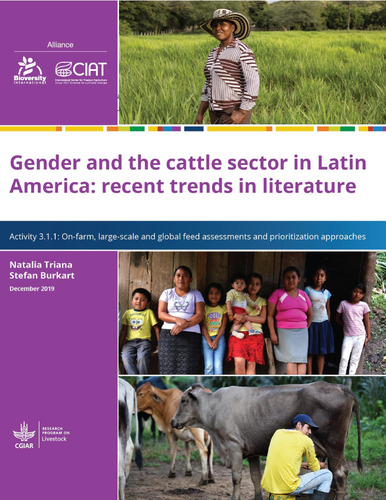Gender and the cattle sector in Latin America: recent trends in literature
Abstract
Bovine livestock has proved to be a fundamental economic activity for rural families across Latin America. Although with some geographical variations, dairy and dual-purpose value chains stand out as the main productive systems in the region, especially in Central America and Colombia. Despite cattle farming requiring the participation of most family members, the role of women and youth in it remains largely unrecognized. Recent research trends on gender in agriculture signal the importance of drawing attention to the contributions of both men and women to cattle production as a necessary mechanism to overcome a prevalent gender gap. Research on the subject also highlights the centrality of properly recognizing such inputs, as gender imbalance has been found to be detrimental to the efficiency and sustainability of productive units. This literature review summarizes the research published in the topic of bovine livestock and gender in Latin America, finding three main perspectives: a) the analysis of dairy, beef, and dual purpose value chains in Central America, where women’s participation (as well as the action nodes where they exert more influence) in the productive process is highlighted; b) the study of cattle production in the Southern Cone, where the roles and responsibilities of family members are dissected; and c) research inputs on forage technologies, genetic breeding and mitigation strategies developed in Central America, in which both women and youth have been identified as central (or potential) agents of change. This paper summarizes the main contributions in the subject with examples ranging from Argentina to Nicaragua, finalizing with a concluding section signaling possible avenues for future research.

